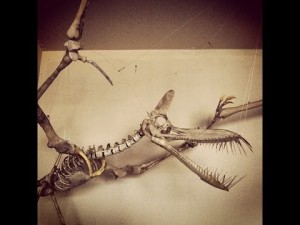Enter one of the most amazing finds in prehistoric history. Chinese scientists have unearthed five pterosaur eggs at a dig site in northwestern China. The extravagant find is reportedly 120 million years old, marking it as one of the most landmark finds, especially its preservation level. Previously, scientists have come across only four pterosaur eggs, but all were flattened and destroyed during the fossilization process. The find was discovered on Thursday. What are pterosaurs? The reptiles was a mix of a bird and bat, and one of the first cousins of dinosaurs to have the ability to fly.
The size differences of the pterosaurs could be drastic, some were as large as a military F-16 fighter jet, others no bigger than a standard piece of paper. When the extinction of dinosaurs happened, nearly 66 million years ago, the pterosaurs also died out.
The fossils of the pterosaurs are extremely difficult to find, which makes the Chinese unearthing an amazing, and heady find. The scientists advised the 3D eggs were preserved very nicely. It also includes around 40 adult individuals of a possibly newly identified species of pterosaurs, which reportedly lived in a colony near freshwater lakes.

Zhonghe Zhou, a paleontologist and director for the Chinese Academy of Sciences’ Institute of Vertebrate Paleontology and Paleoanthropology, was thrilled at the find. Zhou confirmed the site was the “most important pterosaur” digs discovered.
Researcher Xiaolin Wang was just as elated about the find, stating hundreds “of individuals and eggs together from one site,” shows pterosaurs’ actually had a pretty large population. In addition, differences between the genders were noted, such as the males with larger head crests.
This specific breed of pterosaur is called Hamipterus tianshanensis, and had a wingspan of about 11 feet long. Their teeth were pointy to catch prey, potentially fish, based on their colony locations.
Zhou is thrilled at the possibility of uncovering more eggs and bones at the site. Until now, little has been known bout the behavior of the pterosaur species. It appears, thanks to Chinese scientists, that is about to change. The study on the species appears in the journal Current Biology.










